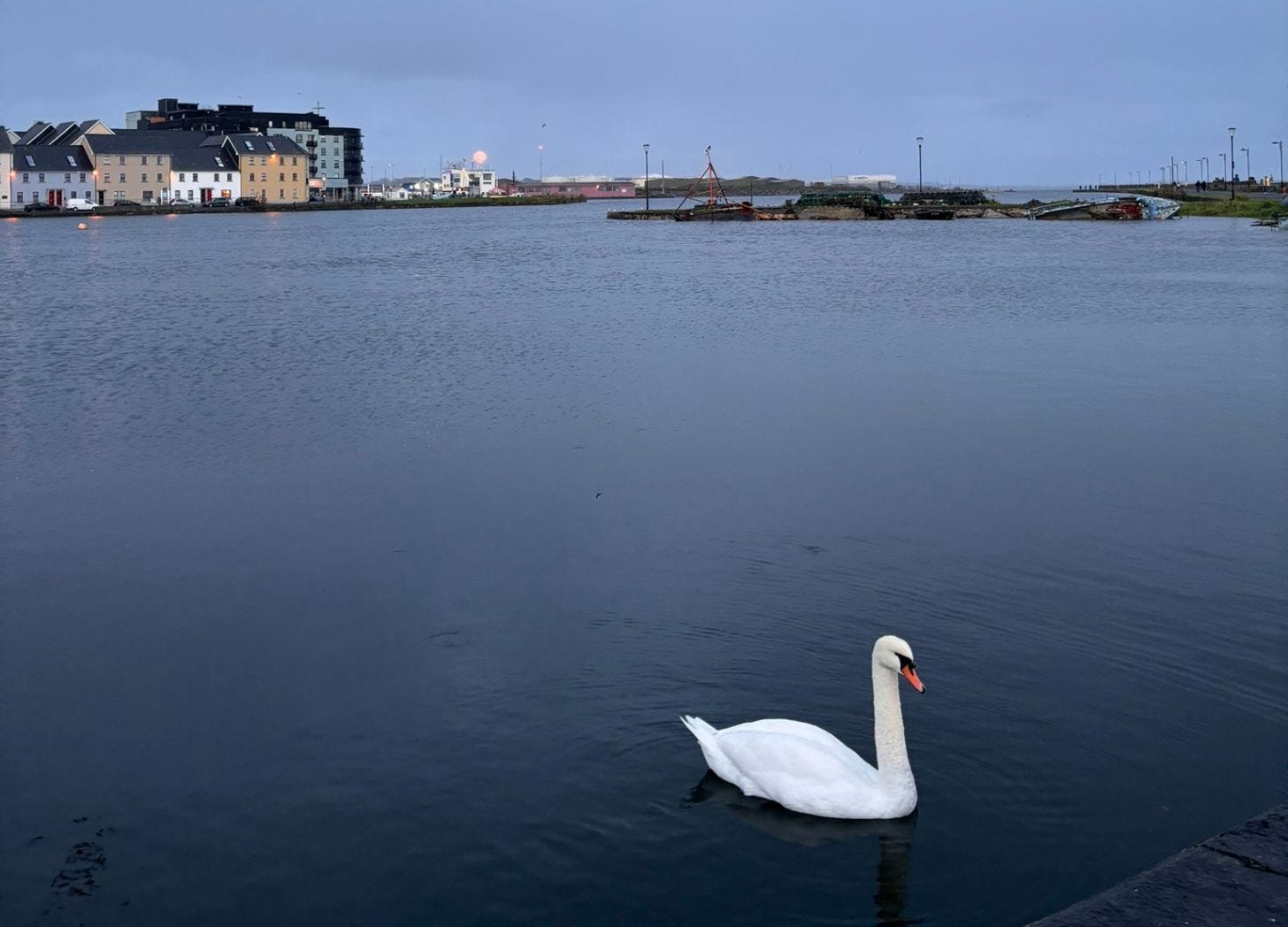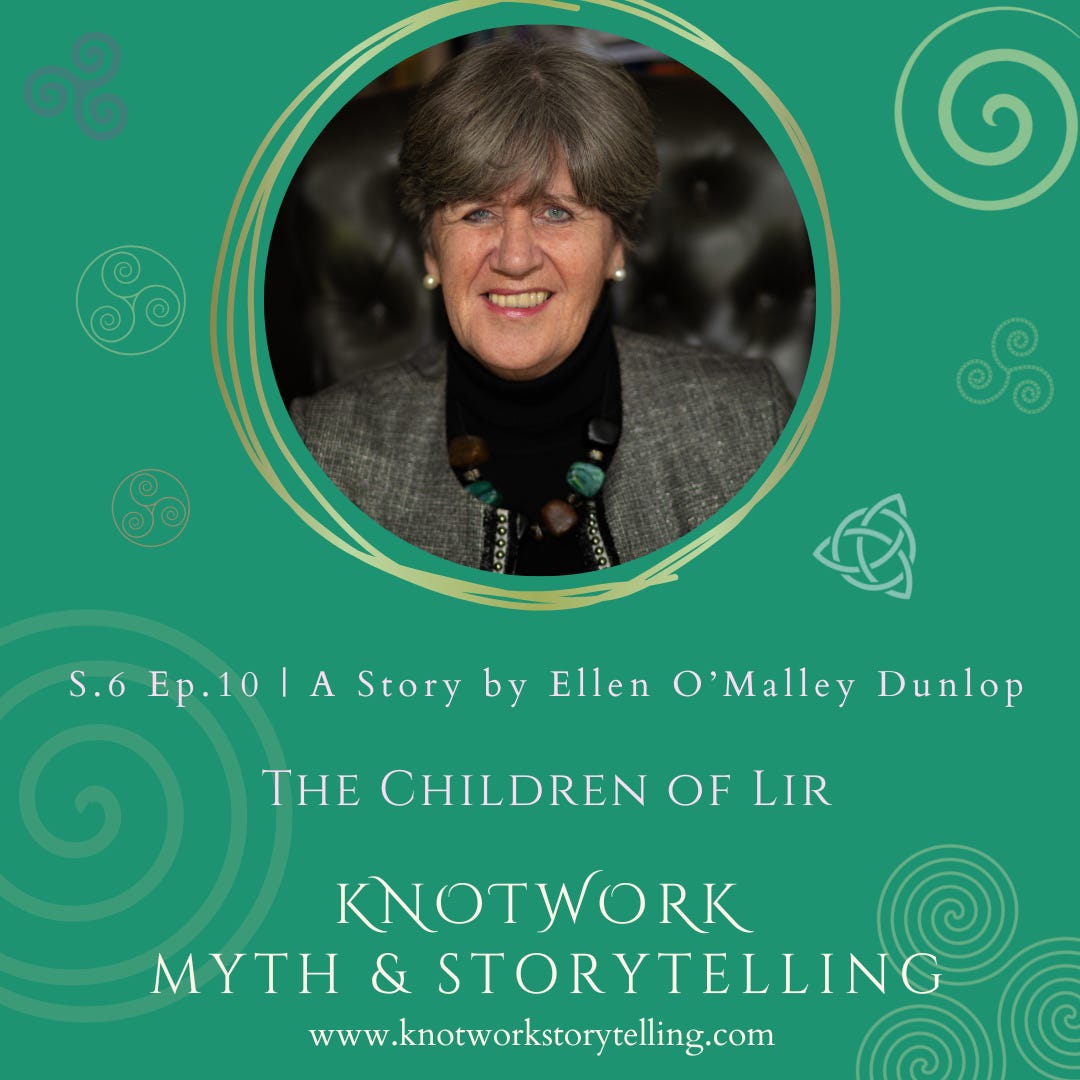The Beauty and the Terror of the Swan
The Children of Lir and the Darkness within "Lovely" Stories
“That was my favorite story, but you never wanted to read that one.”
When I told my daughter that this week’s KnotWork Myth & Storytelling episode was about the Children of Lir, she surprised me with that memory from our years of bedtime read alouds from that big book of Irish mythology.
Why would I steer her away from the story of Fionnuala and her brothers and their stepmother, Aoife? I can’t remember.
Was it something about how sad the story was? Did it trigger grief for my own mother? Was it the heavily Christian ending?
Maybe I just despised one of the illustrations. Those who have spend more than thousand nights reading the same books to small children will surely remember the wild aversions one can develop to innocent seeming details.
Mairéad told me that she simply loved the swans…
Of course she did. Swans are on the list of noble, romantic animals who we imagine to be symbols that emerge from the good parts of the unconscious.
We conveniently forget - or never had occasion to learn - that they can be vicious.
Have you ever had someone tell you the harrowing tale of being attacked by a swan as a child? You have to set aside your initial reaction of “but it’s a swan” and believe them when they say being chased by a bird with a five foot wingspan, and a hell of a strong beak, when you are three feet tall really is terrifying.
Or, simply go back to Yeats’ “Leda and the Swan.”1
A sudden blow. Her helpless breast. The brute blood of the air.
I still remember “incredible poem” first, and “a rape story” second.
Our Double Vision of the Sacred Swan
I didn’t realize that swans are relatively rare in North America. As kids, we spent plenty of time feeding them in the lakes, salt marshes, and wet cranberry bogs on Cape Cod. I only realized how much I missed them when I was in the lower Hudson Valley last year and a group of them flew beside me as I sped by a highway-side lake. They were the first swans I’d seen in years.
In fact, the mute swans we see in the coastal northeast are considered invasive species. Their ability to eat eight pounds of organic matter a day, and all the resulting bird shit, are a problem for local ecosystems.
There is also some debate as to whether the swans of Ireland are native to the island.2 It’s possible they were introduced by the Normans (who, rather synchronistically introduced the story of the Children of Lir to Ireland. Rather than being a “Celtic” tale, it’s a story with broad Indo-European origins).
Whether they flew to Ireland on their own or came packed in some rich woman’s basket, we still seem to agree that few of those details matter because they are just so pretty.
This Week on KnotWork: The Shadows Left by Beautiful White Birds
My KnotWork guest is Ellen O’Malley Dunlop. She is a qualified psychotherapist and group analyst who was CEO of the Dublin Rape Crisis Centre from 2006-2016. Ellen is currently a member of the Council of Europe's Expert Group on Violence Against Women. Along with her husband Sandy Dunlop, Ellen is the co-founder of Bard Mythologies.
As Ellen says of her own story:
People think it's a beautiful story, you know, lovely story, lovely, oh, beautiful swans. But it's a horrendous story full of abuse of power, abuse of children and abuse of women.
And yet, because we humans have such a complicated relationship to story, even as when we pause to look at the horrors contained in the myth, there’s something deeply beautiful in the return to this tale of grief, jealousy, and missed connections.
Explore these paradoxes with Ellen and I on this new episode of KnotWork Myth & Storytelling .
https://birdwatchireland.ie/app/uploads/2019/03/Species-Focus-Mute-Swan.pdf






